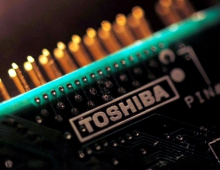
Toshiba's XL-FLASH Storage Class Memory Solution Bridges the Performance Gap Between DRAM and NAND
Toshiba Memory America, Inc. today announced the launch of a new Storage Class Memory (SCM) solution: XL-FLASH.
Based on the company’s BiCS FLASH 3D flash memory technology with 1-bit-per-cell SLC, XL-FLASH has been designed to bring low latency and high performance to data center and enterprise storage. Toshiba will start shipping samples in September, with mass production to begin in 2020.
Classified as SCM (or persistent memory), with the ability to retain its contents like NAND flash memory, XL-FLASH promises to bridge the performance gap that exists between DRAM and NAND. While volatile memory solutions such as DRAM provide the access speed needed by demanding applications, that performance comes at a high cost. As the cost-per-bit and scalability of DRAM levels off, this new SCM (or persistent memory) layer in the memory hierarchy addresses that issue with a high density, cost effective, non-volatile NAND flash memory solution.
Sitting in between DRAM and NAND flash, XL-FLASH brings increased speed, reduced latency and higher storage capacities – at a lower cost than traditional DRAM. XL-FLASH will initially be deployed in an SSD format but could be expanded to memory channel attached devices that sit on the DRAM bus, such as future industry standard non-volatile dual in-line memory modules (NVDIMMs).
Key Features
- 128 gigabit (Gb) die (in a 2-die, 4-die, 8-die package)
- 4KB page size for more efficient operating system reads and writes
- 16-plane architecture for more efficient parallelism
- Fast page read and program times. XL-FLASH provides a low read latency of less than 5 microseconds, approximately 10 times faster than existing TLC





















